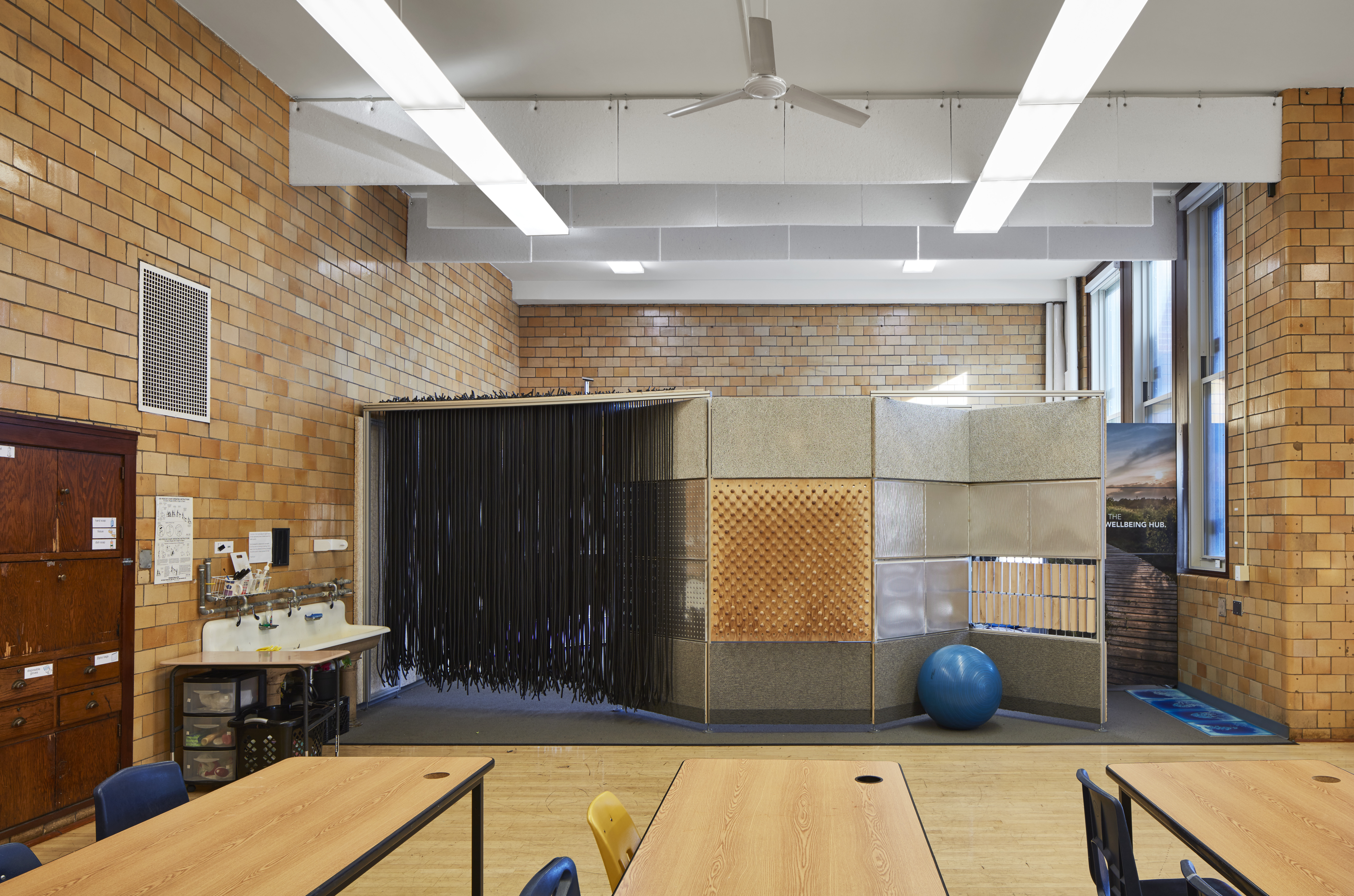With an enrollment of nearly 4500 students and a building that takes up more than 600,000 square feet, Lane Tech College Prep High School can feel overwhelming to just about anyone. But for Lane Tech students with autism, sensory processing disorder or other conditions, sensory overwhelm could seriously interfere with learning.
These days, there’s a refuge. For the last two years, Lane Tech’s diverse learners have benefitted from time in the Sensory Wellbeing Hub, created by global design firm HKS Inc. The hub is an offshoot of a science classroom, sheltered but not isolated from the class and lab space. You can enter the hub through a side passage, or enjoy the feeling of walking through what students call “the car wash”–a row of long black, stretchy cords that takes up about half the outer wall.
“Some of the kids just get in and tangle in it,” said Assistant Principal Mollie Hart. Creating a hub like this had been her dream for five years before the 2017 launch. “If we could just get them into a space where they could find respite faster,” said Hart, “they wouldn’t miss so much of their education.” She found an ally in Lane Tech Alumni Association president Michelle Weiner, who led an alumni fundraising drive and connected with HKS.
The hub is divided into three zones. In the active zone, shown at the beginning of this post, students can engage with a sound wall, a textured wall and rolling pins.
In the respite zone, students can calm down by viewing nature scenes, working with a giant Lite Brite board, or using a trampoline.

Within the respite zone, students can snuggle up in “the cocoon,” a tent-like structure lined with double-layered acoustic panels. When I visited, the bean bag and weighted blanket were set inside, ready for anyone who needed a cozy moment of quiet.

Since the hub opened, “it has been a lot calmer,” Hart said. In its first year of operation, HKS received feedback from Lane’s students and teachers and tweaked the design based on what they said. Now students come in before or after classes, during lunch, or as needed. Teachers have been known to pop in for a moment of refuge, too, Hart noted.
While some affluent suburban districts are teaming up to provide brand-new schools designed to meet the needs of students with sensory challenges, Lane Tech’s hub offers a relatively affordable, replicable option for schools to create cutting-edge space within their existing buildings.
Photo of the outer wall of the Sensory Wellbeing Hub courtesy Tom Harris Photography.
Maureen Kelleher
Latest posts by Maureen Kelleher (see all)
- CPS Parents Wanted for Research Study - March 27, 2023
- Tomorrow: Cure Violence with #Belonging - August 17, 2022
- Still Looking for Summer Camp? - June 13, 2022

1 comment for “Inside Lane Tech’s Sensory Wellbeing Hub”